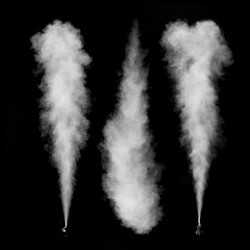New instrument explores role of organic aerosols
Organic aerosols play a major role in the chemistry and physics of the atmosphere, as their physical and chemical properties are of profound importance. They come from both natural and man-made sources and serve as cloud condensation or ice nuclei and sites of interfacial chemistry. They also scatter and absorb incident radiation. Despite their ubiquity and importance in the environment, little is known about organic aerosols. Therefore, the BBOT (Characterizing the phase transitions of single organic aerosols in an optical trap) project was established to develop a new instrument for understanding aerosol behaviour, at the level of a single particle (600 – 5 000 nm in size), and its influence on various atmospheric processes. Project partners constructed an instrument that can be cooled down to 228 K (-50 °C) to mimic temperatures in the troposphere and stratosphere. It was used to explore aerosol phase transformations of a single aerosol particle and combined an optical trap comprising two ‘Counter-propagating Bessel beams’ (CPBBs), ‘relative humidity’ (RH) and temperature control. Proof of concept tests were conducted, and involved freezing several supercooled test substances: water and long-chained hydrocarbons. Researchers conducted the first reported study of the freezing process of levitated single submicrometre-sized droplets in air using optical trapping techniques, including supercooled water droplets at 228 K. Project partners also explored the behaviour of organic (sucrose) aerosol droplets and the conditions that lead to glass formation of these aerosols at room temperature. In addition, explorations into the freezing of long-chain aliphatic hydrocarbons and the response of ultra-viscous organic aerosols to changes in ambient RH increased understanding of the behaviour of aerosols in the atmosphere. Results suggest there is a link between chain-length and temperature dependence to the nucleation mechanism . BBOT will provide a deeper understanding of the indirect effects of aerosols and their impact on global warming by supplying data for developing more accurate climate models, thereby improving their predictive ability. The results will also be used to inform science policy.







